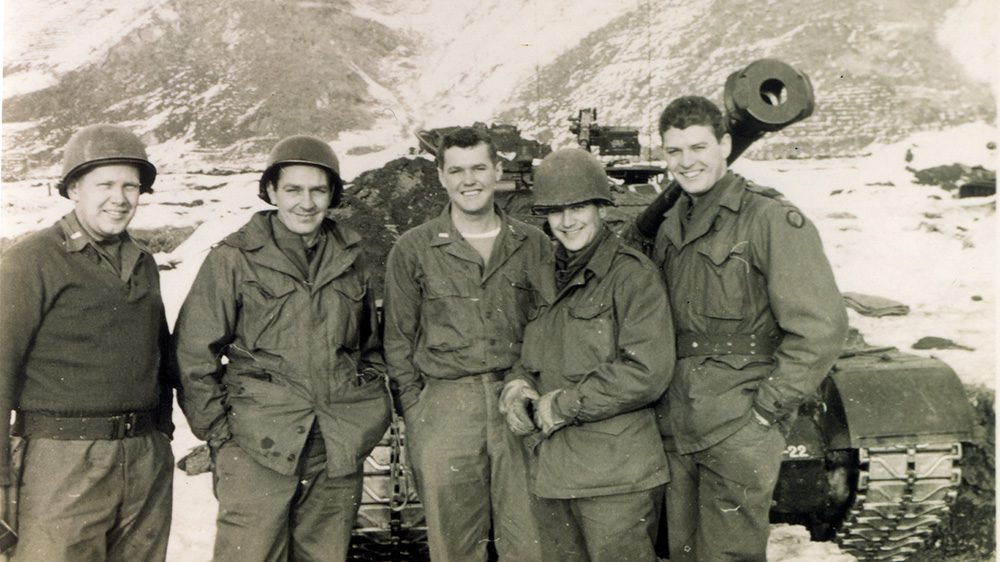The Alphabet Classes of VMI

2nd Lt. Thomas D. Kelly '50B with members of his unit during the Korean War.

2nd Lt. Thomas D. Kelly '50B with members of his unit during the Korean War.
The VMI alphabet classes of 1948A, 1948B, 1949A, 1949B, 1949C, 1950A, and 1950B were the result of academic disruption caused by World War II. Between 1942–45, every decision at the Institute was based on wartime expediency. The academic program was accelerated during the war, resulting in a class graduating as much as a year ahead of schedule. VMI, in essence, went on a year-round academic program of three semesters (16 weeks each) a year with a 1-month break between sessions.
Graduation for the Classes of 1942 and 1943 was moved from the usual June date to May. Twelve pre-med biology majors in the Class of 1944 graduated in December 1943 so they could start their M.D. training. The 1st Class cadets of 1944 were inducted as a group into the Army in May 1943 and sent directly to OCS. The Class of 1947 matriculated in June 1943 instead of the traditional September.
In 1943, VMI adopted an accelerated wartime “three-semester year,” which resulted in two classes starting during the same calendar year and a need to distinguish one group from another—“A” and “B.” The Class of 1948A arrived in February 1944, while the Class of 1948B came in June 1944. The Class of 1949A arrived in February 1945, and the Class of 1949B matriculated in July 1945.
There was no matriculating class in fall 1945. The Class of 1950A entered in January 1946, and the Class of 1950B entered on the traditional time of September 1946. They graduated after a normal 4-year academic cycle in June 1950. Postwar normalcy began to return to the Institute.
After the war, former cadets, now veterans, could use the GI Bill to complete their education. Many decided to use it at civilian college—they had enough soldiering, and after all, they would always be a “brother rat” of their VMI class. A large number of veteran alumni did return to finish their undergraduate degrees at VMI. They were assigned to a class depending on how much of their degree requirement remained to be completed. The influx was absorbed in the class years of 1948, 1949, and 1950.
All of the alphabet classes, with the exception of 1949C, were bonded with their own Rat Line. Accordingly, the Class of 1948A considered itself unique and distinctive from 1948B because they both had separate matriculation dates and Rat Lines. While the Classes of 1949A and 1949B were a blend of cadets who experienced the Rat Line together and also had a number of returning veterans, the Class of 1949C was comprised completely of returning alumni veterans who had already had a Rat Line with their original matriculating class and did not repeat that age-honored tradition. Some 1949C graduates maintained a dual loyalty to their original class and their 1949C graduating class.